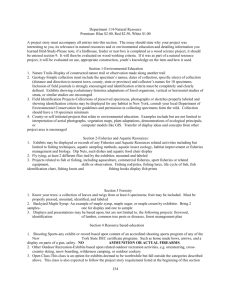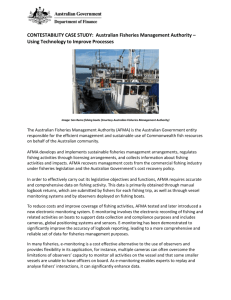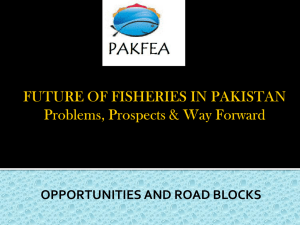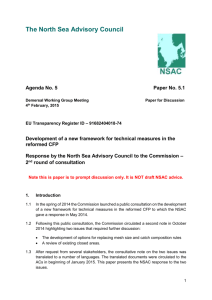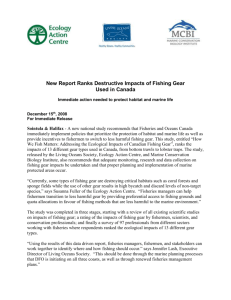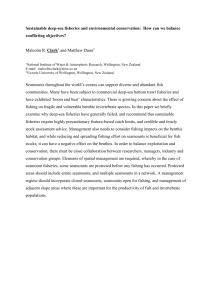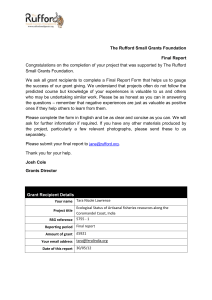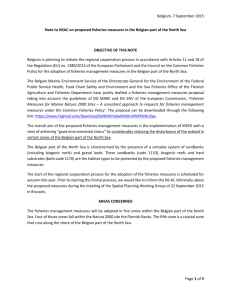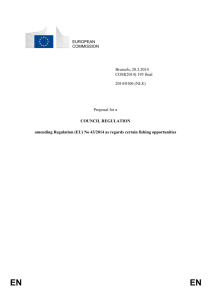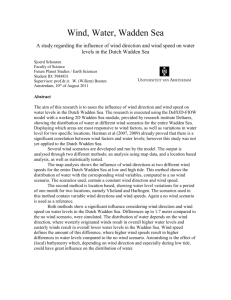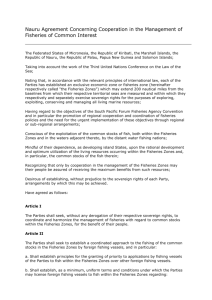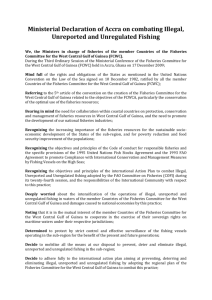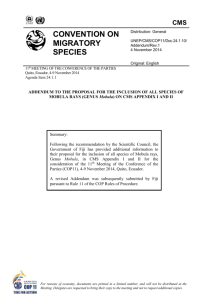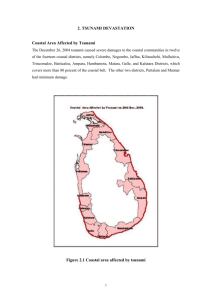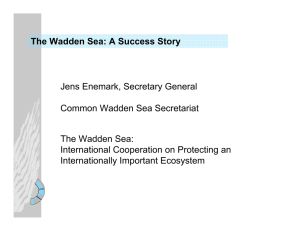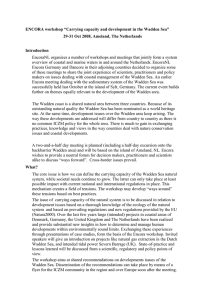principles for sustainable fisheries
advertisement
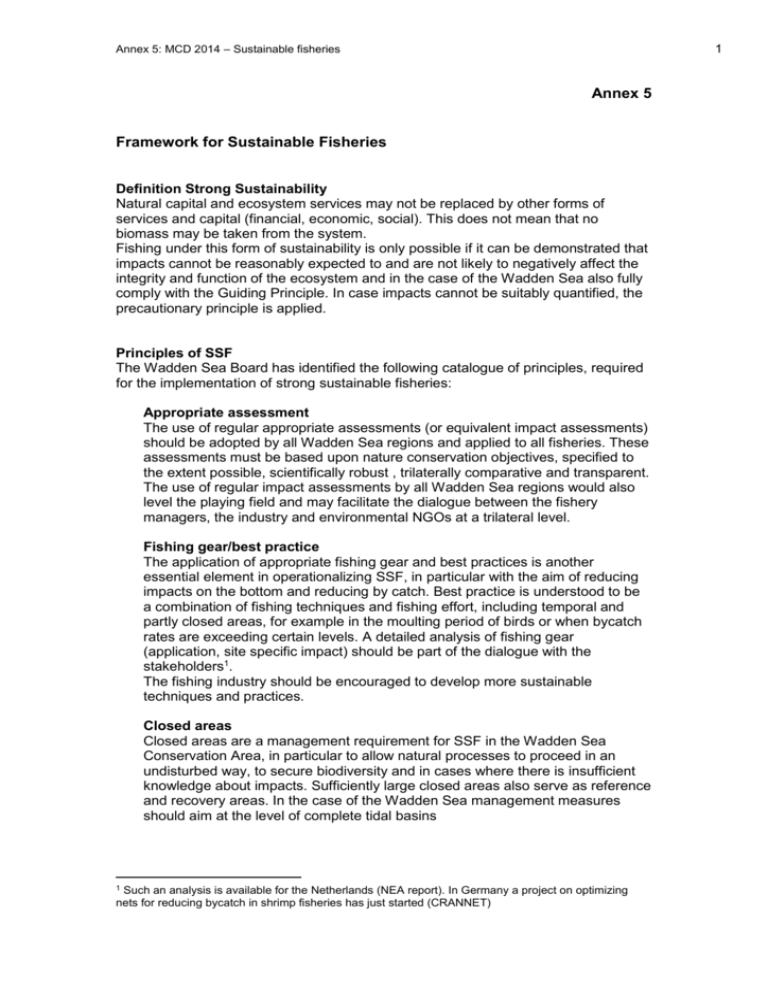
Annex 5: MCD 2014 – Sustainable fisheries 1 Annex 5 Framework for Sustainable Fisheries Definition Strong Sustainability Natural capital and ecosystem services may not be replaced by other forms of services and capital (financial, economic, social). This does not mean that no biomass may be taken from the system. Fishing under this form of sustainability is only possible if it can be demonstrated that impacts cannot be reasonably expected to and are not likely to negatively affect the integrity and function of the ecosystem and in the case of the Wadden Sea also fully comply with the Guiding Principle. In case impacts cannot be suitably quantified, the precautionary principle is applied. Principles of SSF The Wadden Sea Board has identified the following catalogue of principles, required for the implementation of strong sustainable fisheries: Appropriate assessment The use of regular appropriate assessments (or equivalent impact assessments) should be adopted by all Wadden Sea regions and applied to all fisheries. These assessments must be based upon nature conservation objectives, specified to the extent possible, scientifically robust , trilaterally comparative and transparent. The use of regular impact assessments by all Wadden Sea regions would also level the playing field and may facilitate the dialogue between the fishery managers, the industry and environmental NGOs at a trilateral level. Fishing gear/best practice The application of appropriate fishing gear and best practices is another essential element in operationalizing SSF, in particular with the aim of reducing impacts on the bottom and reducing by catch. Best practice is understood to be a combination of fishing techniques and fishing effort, including temporal and partly closed areas, for example in the moulting period of birds or when bycatch rates are exceeding certain levels. A detailed analysis of fishing gear (application, site specific impact) should be part of the dialogue with the stakeholders1. The fishing industry should be encouraged to develop more sustainable techniques and practices. Closed areas Closed areas are a management requirement for SSF in the Wadden Sea Conservation Area, in particular to allow natural processes to proceed in an undisturbed way, to secure biodiversity and in cases where there is insufficient knowledge about impacts. Sufficiently large closed areas also serve as reference and recovery areas. In the case of the Wadden Sea management measures should aim at the level of complete tidal basins 1 Such an analysis is available for the Netherlands (NEA report). In Germany a project on optimizing nets for reducing bycatch in shrimp fisheries has just started (CRANNET) Annex 5: MCD 2014 – Sustainable fisheries Monitoring/control/black box This includes monitoring of fishing efforts and the status of fished and non-fished areas. The fisheries sector is co-responsible for monitoring. Black boxes, or equivalent systems, must be installed on all vessels. This is an important precondition for co-management, including nature protection. Stock assessment Regular stock assessments must be carried out as a basis for fisheries management. This is an essential element for implementing SSF. Fishing impact should be such that stable food webs are restored and maintained, supporting natural populations of predators. Appropriate knowledge<>responsibility of sector In the process of operationalizing SSF, use must be made of best available knowledge. There is a responsibility of the sector in supporting knowledge about the status of the ecosystem, for example location of subtidal reefs. Best practice pilots (learning by doing) Transition towards SSF also implies that there must be ample possibilities for testing new methods and practices. Knowledge gained in pilots must be spread among the fisheries and nature protection community. 2




